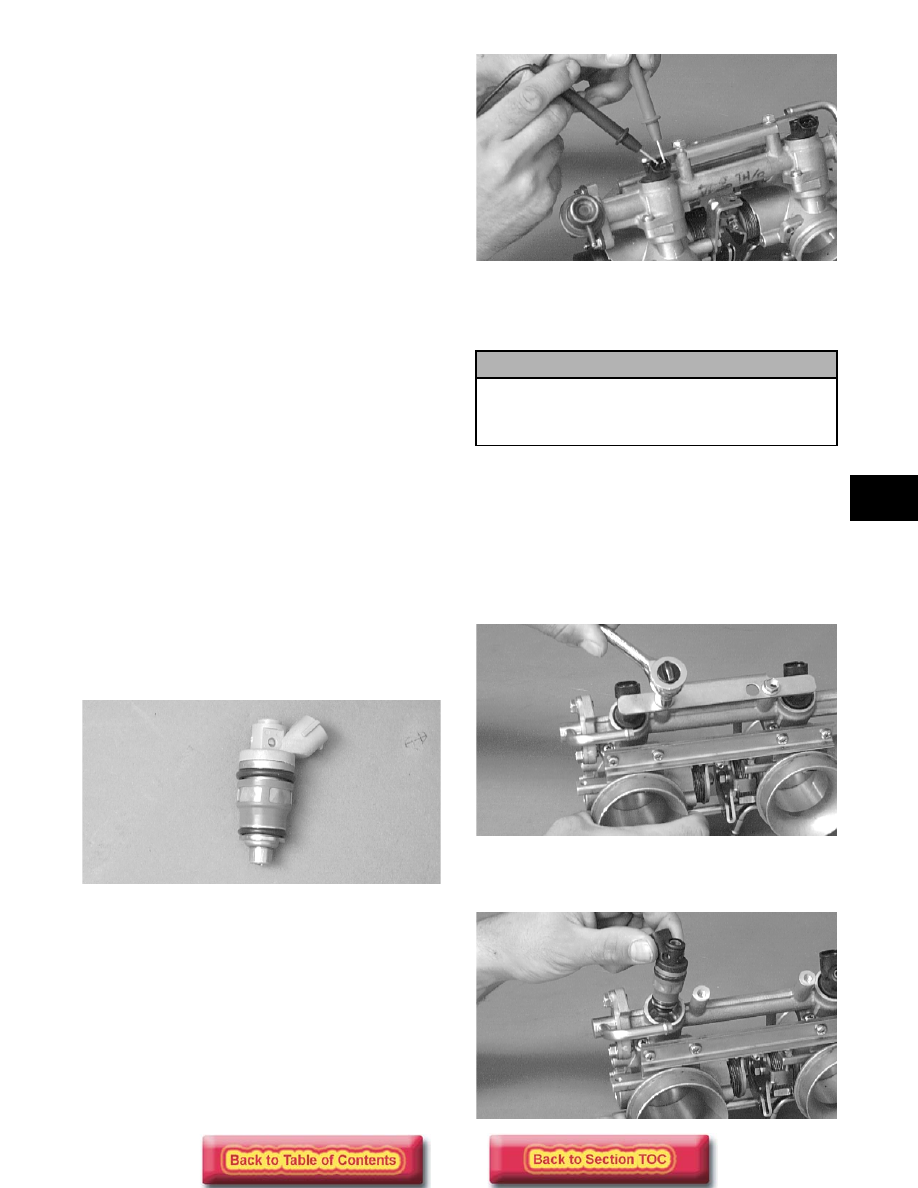Snowmobile Arctic Cat (2004 year). Manual - part 52

4-43
4
2. Using TPS Adjustment Tool (p/n 0644-299), con-
nect its wiring harness to the TPS. Connect the
two Fluke meter leads (red and black) using the
two pin jack adapters provided with the adjust-
ment tool to the red and black jacks of the TPS
adjustment tool.
NOTE: Before using the TPS adjustment tool,
verify its battery condition. The battery used in the
tool is a 9-volt battery. To check battery condition,
use a digital volt/ohmmeter set on DC volt scale.
Test between the adjustment tool black and red
jacks. Insert the red lead of the digital voltmeter
into the red jack of the adjustment tool and the
black lead of the digital voltmeter into the black
jack of the adjustment tool. If voltage is found
below 4.9 volts, replace the battery.
3. Set the multimeter selector to the DC scale; then
SLOWLY depress the throttle lever. The meter
reading should show a smooth rise all the way to
wide-open throttle. Repeat this step until it is
assured that there are no open areas or “peaks” in
the reading.
NOTE: If a reading contains open areas or
peaks, the throttle position sensor may be faulty.
Refer to the proper Checking/Adjusting TPS proce-
dure in Section 5 - Digital 3-D Ignition in this man-
ual.
4. Disconnect the adjustment tool harness from the
TPS. Connect the snowmobile TPS harness to the
TPS.
NOTE: Before installing the TPS harness con-
nector, apply dielectric grease to the connector
pins.
FUEL INJECTORS
AO139D
Testing Resistance/Voltage
1. Disconnect the fuel injector wiring harness.
2. Set the meter selector to the OHMS scale.
3. Test between the two injector terminals. Test
specification is 2.4-3.3 ohms.
AO144D
4. If not within specifications, replace the injector.
Removing
1. Loosen the clamp securing the fuel supply hose to
the fuel rail; then remove the hose from the fuel
rail.
2. Disconnect the wiring harness from each injector.
3. Remove the two screws securing the injector hold-
down plate to the throttle body assembly; then
remove the plate from the injectors.
AO145D
4. Remove the fuel injectors from the throttle body
assembly.
AO146D
! CAUTION
The fuel supply hose may be under pressure.
Place an absorbent towel around the connection
to absorb fuel; then remove the hose slowly to
release the pressure.